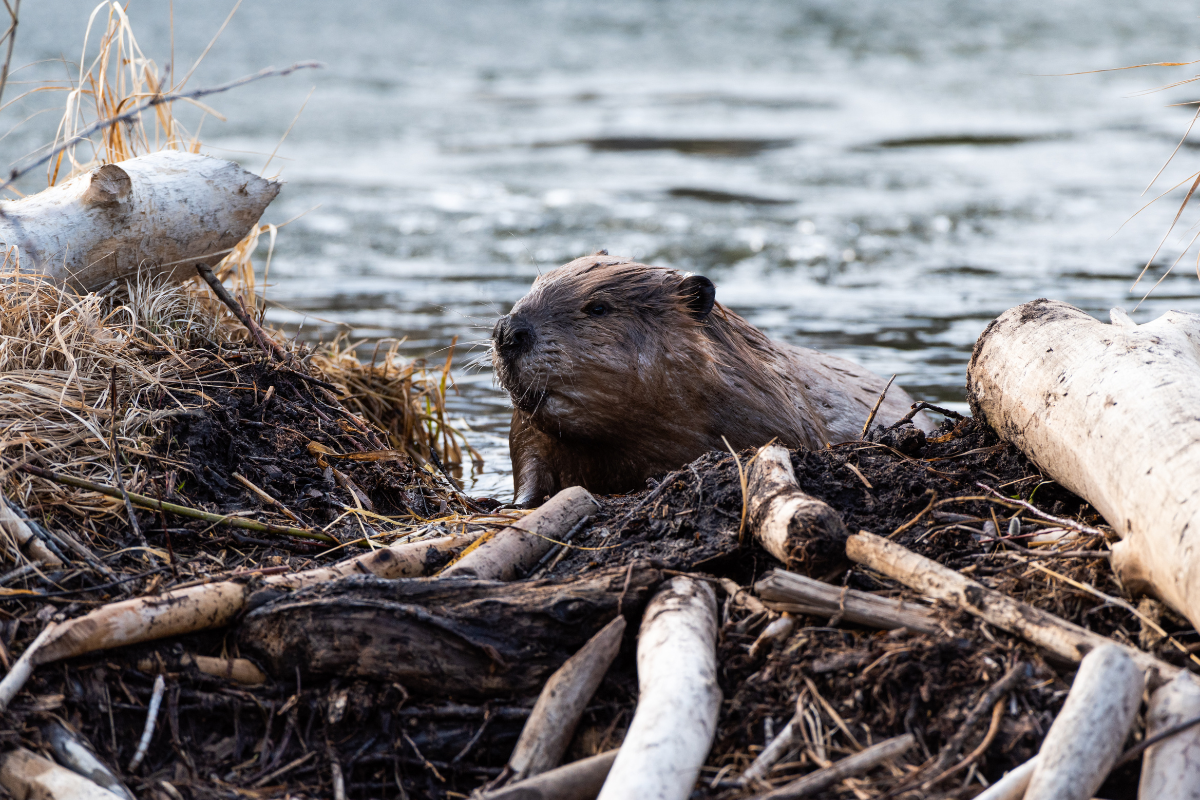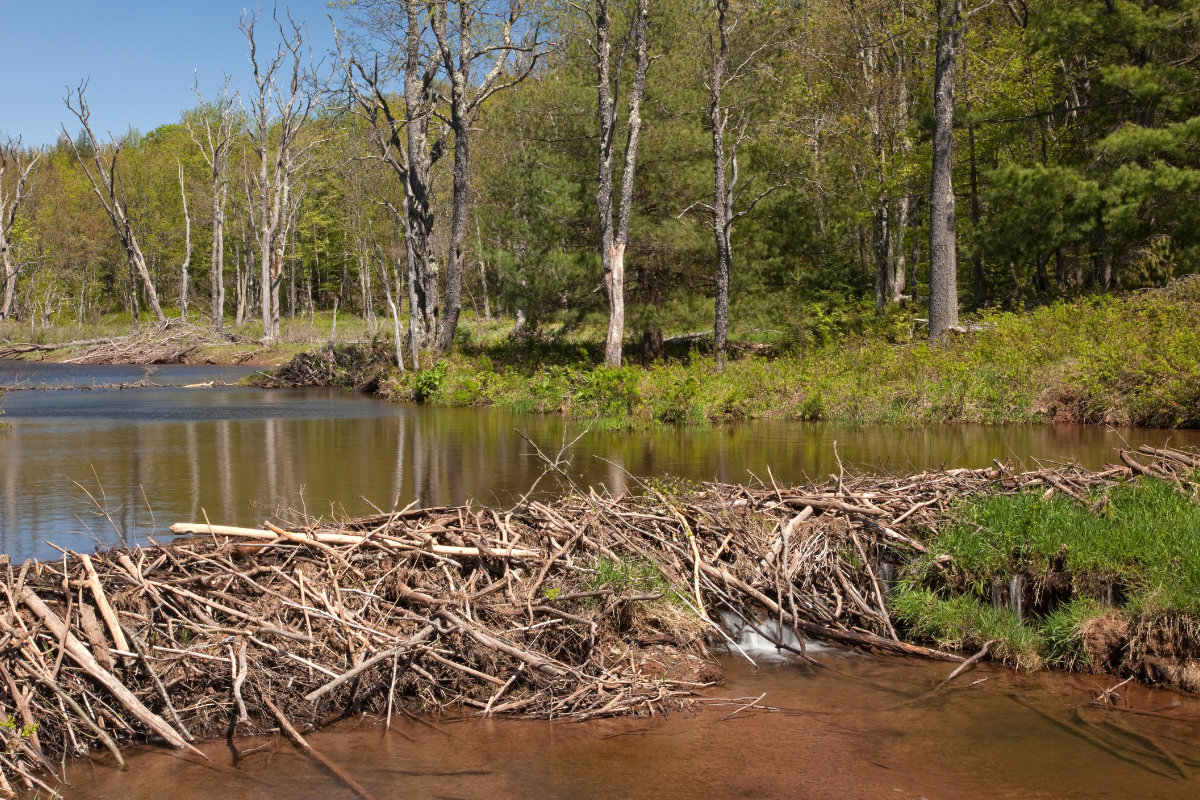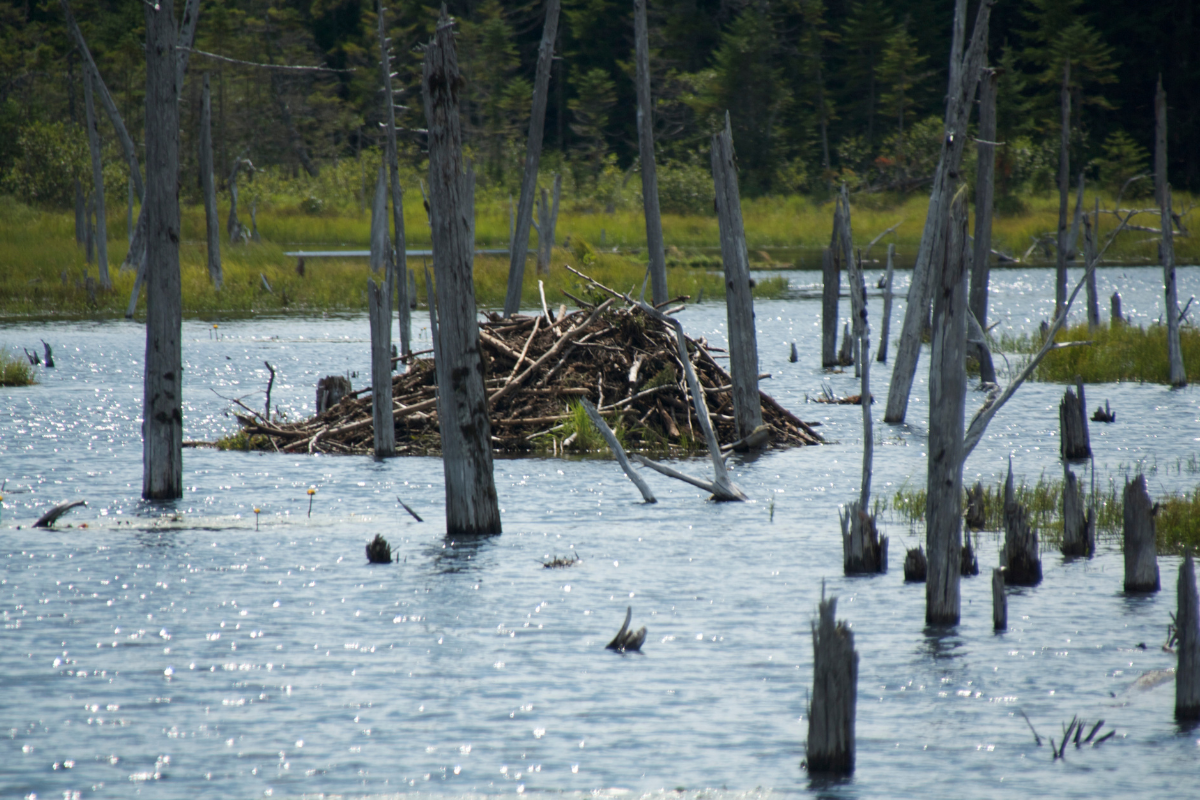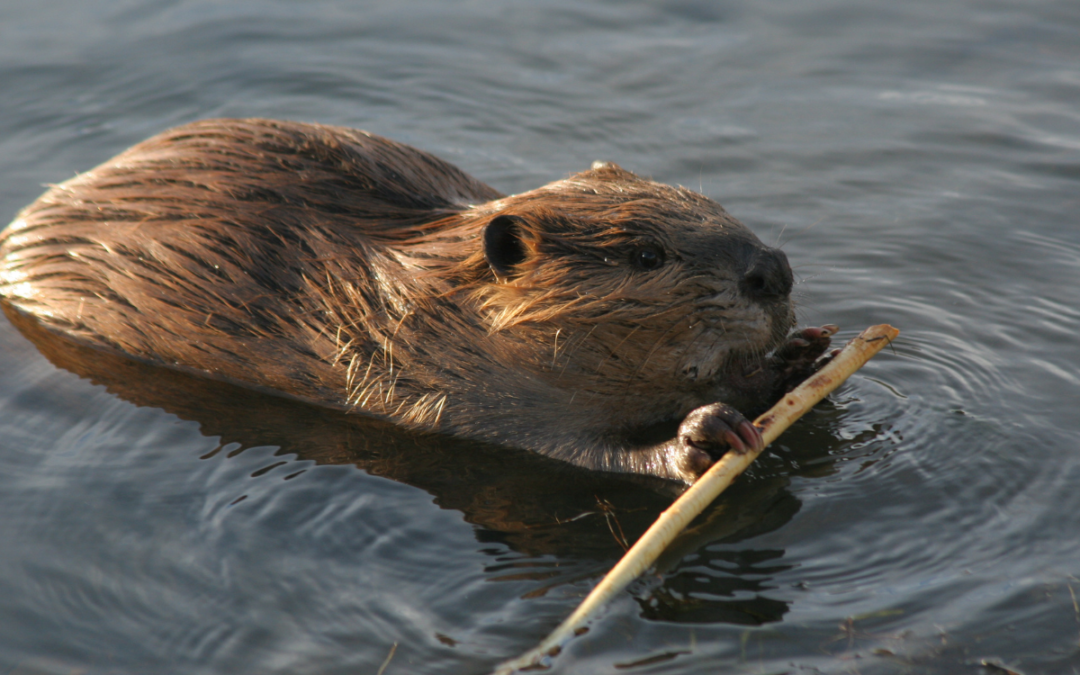Are beavers good or bad for a pond ecosystem? It depends on who you ask. Fisherman like them, but land owners often do not.
Fisherman enjoy the habitat that beaver dams create for the fish in a pond or lake. This habitat serves as a refuge for prey fish, allowing them to congregate and hide from predators. Predators like largemouth bass will then gather in front of this habitat as they try to ambush bluegill and other prey.
Pond owners, on the other hand, don’t appreciate the destructive nature of beavers on their property. Contrary to the belief of some, beavers are vegetarians and don’t eat fish. But they can do significant damage to a property. Below we’ll discuss some of the negative effects of beavers on a pond or lake.

Beavers Clogging Pipes
As beavers chew down trees and accumulate debris, they’ll often stack this debris near drain pipes and risers as they create a habitat for themselves. When pond drains become clogged with debris, problems occur. This causes the pond to have improper water levels during periods of heavy precipitation because the pond is unable to drain as it was intended.
The flooding risk that this creates can cause issues for a pond dam. A busted pond dam is a pond owners worst nightmare, which is why many ponds have drains to keep water at appropriate levels. Beavers will also burrow and cause damage to underground pipes, which are a pain to replace or repair.

Beavers Causing Erosion
As beavers burrow into pond or lake banks, they create the perfect scenario for erosion. These burrows expose bare soil which is susceptible to runoff during heavy rainfall. Over time, these “washed-out” burrows can significantly compromise a pond dam.
Erosion issues are also created as beavers chew and eliminate trees along a pond edge. Tree roots hold soil in place and help to prevent erosion along a pond edge. When those trees and other vegetation are removed, there’s nothing to keep the soil from being washed into the pond.
Not only does this create issues for the integrity of the pond dam, but it can also create unwanted sediment accumulation along the pond edge. A deep pond edge is desired to prevent subsurface vegetation from thriving. When sediment accumulates and pond edges are made shallow, it creates the perfect situation for vegetation to thrive.

Unwanted Debris Piles
While fisherman may enjoy catching bass near debris piles created by beavers, pond owners don’t like the unsightly changes in their property. Beaver dams are generally not aesthetically pleasing to pond owners who have worked hard to maintain their property over the years.
Beaver dams can also have serious ecological impacts on a pond or lake. If the pond or lake is connected to streams or other water inputs, beaver dams will restrict the flow into the pond. This can cause the pond to have lower than normal water levels due to the reduced inflow.
By reducing stream flow, beaver dams also can have negative effects on pond diversity. A beaver dam basically turns an open system into a closed system, preventing other fish from moving from the stream into the larger body of water. This reduces diversity which can harm the overall health of the fishery.
Let Up Help Improve Your Pond!
If you start to notice beaver damage around your pond or lake, it’s best to address the problem before it gets worse. Trapping is the best option to remove the beaver and restore the physical structure of your pond. While we don’t trap beavers, we can help if your fishery has been impacted by beaver damage. Just complete this form and we’ll contact you to schedule a time to meet. We look forward to turning your pond into a productive fishery for years to come!

